Counterparty Risk: The Biggest Threat to Your Bitcoin
Counterparty Risk: The Biggest Threat to Your Bitcoin

In this article:
There are all sorts of ways that people end up losing their Bitcoin. It’s not hard to find countless examples of misplaced private keys, social engineering attacks, or people falling victim to the latest "get rich quick" scheme.

These threats are credible, but they tend to draw outsized attention from media outlets, which leverage them to position Bitcoin as being too complicated or scary. Their goal is to create the perception that Bitcoin is “too difficult” while masking the truth that all these threats can be easily mitigated with a little bit of care, attention, and common sense.
The result is that many people don’t want to interact with Bitcoin directly because they find it too intimidating. You will often hear people say things like, “Bitcoin is too complicated for me,” or “I’m not very good with tech, I don’t trust myself with it.” After hearing repeated horror stories, many people get scared away from Bitcoin without even trying it. In our experience, this is one of the most difficult barriers to overcome when trying to encourage people to learn about Bitcoin.
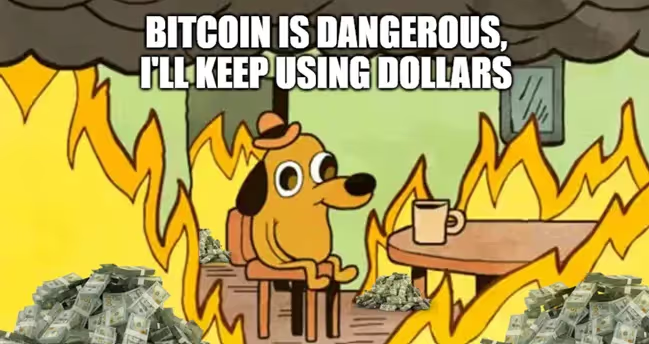
Back when Bitcoin was just a niche interest for cypherpunks and libertarians, it was easy enough for these people to simply ignore Bitcoin and carry on with their lives. It didn’t match their interests, and that was fine. What they are discovering now is that you can only ignore Bitcoin for so long. Now that Bitcoin has entered the mainstream, people who were initially intimidated by it face quite the conundrum: they’ve realised they can’t afford to keep ignoring it, but at the same time, they’re still absolutely petrified of it.
This desire to own Bitcoin while being too terrified to touch it has given rise to a whole host of financial intermediaries that are all too happy to profit from this fear. The market is now awash with various ways to get “exposure” to Bitcoin without ever needing to interact with it directly. These intermediaries will look after the Bitcoin, and all you have to do is hold a paper IOU.

To the uninitiated, this seems like the perfect solution to their problems. They get exposure to Bitcoin’s increasing purchasing power without having to worry about looking after it. The lazy man’s dream ticket!
The cruel irony here, however, is that by trying to avoid the risks associated with holding Bitcoin themselves, people unwittingly introduce another potentially fatal type of risk: counterparty risk.
Let’s explore what that means and why, as a Bitcoiner, you need to be hyper-vigilant about it.
What is Counterparty Risk?
Counterparty risk, also known as default risk, is a financial concept that refers to the potential loss one party to a transaction might suffer if the other party fails to fulfil its contractual obligations.
It differs from other types of risk, like market forces or regulatory changes, because it refers directly to the solvency and reliability of your counterparty.
Counterparty risk is a term commonly used in finance, but the concept can be applied to everyday situations as well. For example, imagine you lend $100 to a friend who promises to pay you back the following week with $10 extra as thanks. If your friend (your counterparty) suddenly moves away or goes bankrupt and can’t repay, then you’ve lost your money not because of bad luck, but because you trusted a counterparty to act responsibly and they defaulted on that obligation.

In traditional finance, counterparty risk operates in the same way, just on a much larger and more complex scale. Financial institutions are exposed to thousands, sometimes millions, of different counterparties, and each of these relationships runs the risk of the other party defaulting. You will hear financial analysts talk about “systemic risk” because the global economy is now so interconnected that if one financial institution fails, it will often take several others that were exposed to it down with it.
We saw this during the 2008 financial crisis when investment bank Lehman Brothers collapsed. Many firms had deals with Lehman, such as complex trades involving loans or investments. When they defaulted, those partners faced billions in losses, sparking a global meltdown because everyone panicked about who else might fail next.

The only solution left to save the system? Socialising the losses and bailing out the banks at the taxpayer’s expense…
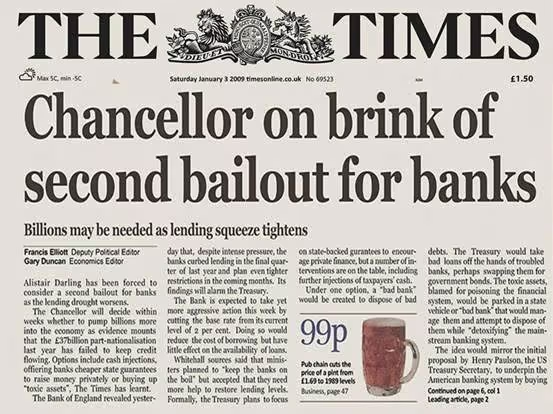
The only way to avoid counterparty risk is to have no counterparty. The only way to avoid a bank run is by not keeping your money in the bank.
Why People Underestimate Counterparty Risk
Our entire financial system is wholly reliant on intermediaries. It has become so prevalent that a growing number of people no longer use cash at all, and very few transactions don’t involve a bank. As a society, we have become accustomed to letting third parties control our money, and by virtue of that fact, taking on counterparty risk has become the norm.
People underestimate counterparty risk because they don’t even stop to consider it.

This is surprising given that when counterparty risks do materialise, they are often catastrophic and result in total loss. Take the Enron scandal in 2001, for example, employees trusted the company with their pensions, only to see them evaporate into fraud and bankruptcy.
So, if counterparty risk can be so catastrophic, why is it that people pay so little attention to it?
Part of the answer is down to simple human psychology. As Daniel Kahneman explains in his book Thinking, Fast and Slow, human beings rely on something called the availability heuristic, a cognitive bias where we judge the likelihood of events based on how easily we can recall examples of them happening.

Financial collapses stemming from counterparty risk are often huge disasters, but they happen infrequently. This results in a bias toward underestimating their likelihood compared to smaller risks that we hear about frequently, such as credit card fraud.
Yes, credit card fraud is a threat that happens more frequently, resulting in the loss of billions annually. But counterparty risk, while infrequent, can result in billions lost in just hours.

The fiat system has further amplified our complacency toward counterparty risk. FDIC insurance now covers depositors for up to $250,000 per account, and in 2008 the Troubled Asset Relief Program (TARP) rescued failing banks to prevent widespread depositor losses. Consumers don’t feel any direct consequences because the government always steps in to bail out the banks.
Like prey animals raised in captivity, people no longer recognise counterparty risk as a predator. Government safety nets have conditioned us like spoiled children to forgo personal responsibility and expect the rest of society to pick up the tab when things go wrong. We don’t take time to appraise the counterparties we deal with because we don’t face any jeopardy.

It wasn’t always this way. Before these financial crutches existed, people were a lot more savvy. During the Great Depression of the 1930s, bank runs were common, and savers would scrutinise the institutions they dealt with properly.
If you want to succeed in Bitcoin, you would be wise to take a leaf out of their book.
Why Bitcoiners Should be Acutely Aware of Counterparty Risk
Bitcoin removes the safety nets we have become accustomed to in the fiat world. If things go wrong at a financial institution, the government couldn’t bail them out even if it wanted to. They can’t create more Bitcoin out of thin air, and Bitcoin transactions are final. Nobody can reverse them.
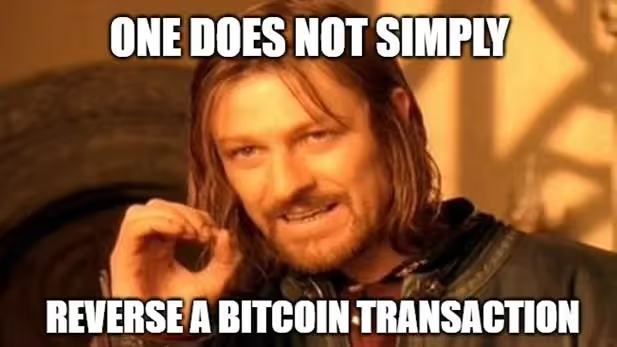
In Bitcoin, no institution is “too big to fail.” If a third-party exchange or lending platform loses your BTC, it’s gone forever. That means that when you’re dealing with Bitcoin, you should be taking counterparty risk a LOT more seriously.
Unfortunately, people who are still too nervous or intimidated to learn how to store and use Bitcoin themselves are turning to institutions in droves to do it for them. Instead of holding Bitcoin themselves with zero counterparty risk, their learned helplessness leads them right into the arms of custodians.
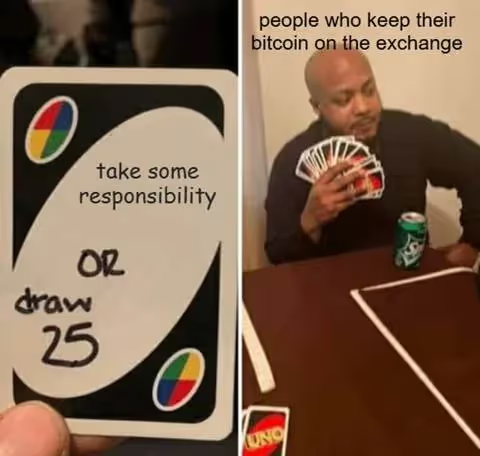
There is a painful irony to this. Those choosing to leave their Bitcoin with third parties often do it because they believe it’s safer than taking self-custody. They think they have removed the risk of losing their keys, getting hacked, or falling prey to social engineering. But they haven’t removed these risks at all. All they’ve really done is consolidate them and move them so that they sit with their custodian. Most of the time, when a custodian does fail, it’s because they lost private keys (QuadrigaCX), got hacked (Mt. Gox), fell prey to social engineering (Bybit), or gambled it all away on altcoins (FTX). Go figure…

Underestimating counterparty risk in Bitcoin can be fatal. Thankfully, Bitcoin allows you to avoid it entirely. You can reduce your counterparty risk to absolute zero by becoming your own bank and by holding your Bitcoin securely in full self-custody.
Bitcoin Eliminates Counterparty Risk
One of Bitcoin’s core innovations is eradicating counterparty risk. Satoshi Nakamoto’s whitepaper was explicit about it: Bitcoin is “a peer-to-peer electronic cash system” relying on “cryptographic proof, instead of trust,” allowing direct transactions without intermediaries who “would inevitably abuse that trust.”
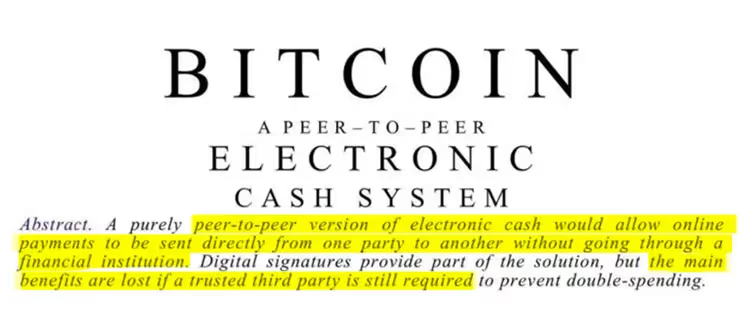
By holding your own private keys in full self-custody, as Bitcoin was designed, you achieve true ownership over your money. No bank can freeze your funds, no exchange can default and lose your money, and no government can debase your wealth by socialising the losses of reckless financiers through printing more Bitcoin.
Yes, Bitcoin does require you to take on more personal responsibility than the fiat system, but learning how to use it isn’t anywhere near as difficult as people make it out to be. Most people can learn the skills they need to keep themselves secure in just a matter of weeks. It’s a very small price to pay when you consider that the alternatives are to remain trapped in fiat watching your wealth evaporate, or trusting a third party to secure your Bitcoin, who might fail and wipe you out completely.

Understanding counterparty risk could mean the difference between achieving financial sovereignty or suffering total loss. It should be an easy choice to make. Your Bitcoin is far safer when you hold it in full self-custody. If you want the best chance of securing your Bitcoin for the long term, you need to become your own bank and reclaim control.
Zero Counterparty Risk – The Bitcoin Way
Everyone is capable of learning the skills required to break free from the shackles of untrustworthy financial institutions and hold their Bitcoin in full self-custody. Anybody who tells you otherwise either doesn’t know what they’re talking about or is trying to sell you something.
You don’t need to be a cryptographer or “shadowy super coder”, you just need to learn how to use a few pieces of software and hardware.
Ignore the FUD. With help from our expert team, you can learn everything you need to know about storing Bitcoin for the long term, and by investing in yourself, you will be better prepared for the future.

When you’re ready to reduce your counterparty risk to absolute zero just book a free 30-minute call and we can schedule your first training session. You will be amazed how much you can learn before summer’s end.
